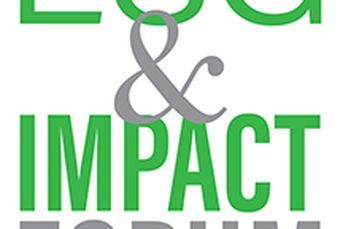Learn the Basics of Financial Education Services
Financial literacy – it starts with you!
https://www.investmentnews.com/wp-content/uploads/assets/graphics src=”/wp-content/uploads2018/10/CI116989917.JPG”
A recent New York Times article revealed that most U.S. states are not effectively teaching high school students about personal finance. In fact, only 5 states earned an A grade for their financial literacy efforts, while 27 states received a C, D, or F. This dismal report card means that hundreds of thousands of high schoolers will go to college without the tools needed to manage their budgets or their student loan debt.
This situation truly has the makings of a financial disaster. Fortunately, you are in a great position to help your clients and their children by adding financial education services to your practice. A good place to start? With the basics.
Get the Money Conversation Started
Parents can find it hard to talk with their kids about money. Help them get the conversation started by offering these general guidelines:
- Encourage clients to be open about family finances.
- Have them discuss the family’s weekly, monthly, and annual spending habits.
- Advise parents to talk about how and why some things are bought on credit and others with cash.
The money talk should also include short- and long-term financial goals, including the actions needed to achieve them (e.g., delaying gratification, spending less on discretionary items, saving more).
Promote Good Financial Habits
To reinforce the money conversation, share these simple tips that your clients can use to promote good financial habits in their children.
Ages 4 and younger. As soon as children show an interest in money, parents have an opportunity to start teaching them about it. Encourage them to:
- Offer toys that incorporate counting. (A quick search for “mathematics and counting toys” on Amazon yields pages of results.)
- Take children shopping, so they can start learning about spending, saving, and delaying gratification.
- Play counting games with coins and use piggy banks.
Ages 5 to 7. By this age, children can grasp that money has several purposes. Your clients can:
- Play board games that highlight financial decision-making.
- Introduce the Money Savvy Pig. It features individual slots for saving, spending, donating, and investing.
- Open a passbook savings account for children and discuss savings and compound interest. Remind your clients that it’s important to let kids withdraw some of their money to buy something they want, or they might lose interest in saving.
Ages 8 to 12. For this group, parents may offer online resources (discussed below) to help kids learn basic money concepts. It’s also an ideal time to introduce an allowance. Here, be prepared to answer some common questions:
- How much? A good rule of thumb is $0.50 or $1 for every year of age
- How often? A schedule (e.g., weekly or monthly) can help establish regular payments.
- How much should be saved, spent, donated, or invested? Set expectations from the start; each time the child is paid the allowance, parent and child should follow the agreed-upon process.
Ages 13 and older. Once kids have demonstrated some maturity with handling cash, parents may consider introducing a debit card or a credit card with a low limit. This is an ideal opportunity for you to offer financial education. Advise parents to:
- Sit down with the teenager every month and go through the process of paying the credit card bill together.
- Show the teenager how to file a tax return if he or she is working.
- Plan with the teenager how to save over the long term for more expensive things (e.g., a car or college), and introduce investing for these purposes. If the teenager has a job, suggest that parents open a Roth or a traditional IRA.
You might even consider hosting an investment club meeting for teens, where you discuss the pros and cons of investing in stocks and bonds and share your expertise. You could also bring in a speaker to promote sound money habits and provide tips for avoiding pitfalls in financial decision-making.
Keep in mind that the most effective approaches are fun, hold kids’ attention, and allow them to practice making money decisions.
Compile a Financial Literacy Reading List
For kids. Money Savvy Generation (makers of the Money Savvy Pig mentioned above) has a couple of O.M.G. (i.e., Official Money Guide) books for teens and college students. About 50 pages long, these books offer concise chapters on topics like budgeting, managing debt, understanding identity theft, and donating to charity.
For younger readers, When Times Are Tough by Yanitzia Canetti and the Pretty Penny series by Devon Kinch help kids develop a better relationship with money through creative, illustrated stories.
For parents. You might suggest that parents add the following to their reading lists:
- Growing Money: A Complete Investing Guide for Kids, by Gail Karlitz and Debbie Honig
- Raising Financially Confident Kids, by Mary Hunt
- Smart Money Smart Kids: Raising the Next Generation to Win with Money, by Dave Ramsey and Rachel Cruze
Teach with Board Games
Another great teaching tool is something that your clients likely have at home: board games. Two classic games that offer abundant learning opportunities are:
Monopoly. Earning money, saving and spending, capital budgeting, risk and reward, expenses, and even taxes—Monopoly covers it all. Plus, new editions of the game translate financial lessons to today’s world.
The Game of Life. In this game, players make life decisions that are tied to financial outcomes. Kids must choose a career (e.g., video game designer, secret agent), decide whether to buy or sell a house, and make other life decisions to see which ones produce the most wealth at the game’s end.
Get Interactive
Last but not least, the Internet is perhaps the biggest educational tool of our time. One of the best sites for teaching kids about money is Monetta, which offers interactive educational games (e.g., Math Madness, Financial Soccer) that balance investing, learning, and fun. The site also features a quarterly newsletter for kids and online quizzes.
Some other great resources you might want to familiarize yourself with include:
- The Mint a comprehensive money education site that includes sections for kids, teens, parents, and teachers. Launched in 1997, it helps users manage their money with the goal of securing a sound financial future.
- The Centsables, a financial literacy program for children that uses superheroes to make learning more fun. It features online games, a library of comic books, and a section for parents with tips for focusing on financial literacy at home.
- Quest to Clean Up, an app that encourages careful spending, teaching kids the value of saving their money for items they really want.
- GreenStreet, an app featuring game play to help kids with setting goals, budgeting, earning money, and giving to charity. Players can rescue endangered animals, but they must budget accordingly to buy food, shelter, and toys along the way.
- Oink, a mobile payment app designed for children ages 8 to 17. The platform helps kids manage their allowance, earn money for doing household chores, and more, while keeping parents involved in the process.
Advise and Educate!
Adding financial education services to your practice will expand your role from advisor to educator. You will be able to help clients discuss money with their children while showing them that you care about their family’s financial well-being. Plus, as your clients’ children grow into adults and the transfer of wealth comes into play, they may be more likely to choose you as their own advisor if you’ve already made a positive impact on their financial lives.
Learn how to talk to your clients about their plans for succeeding generations by downloading our free article, Beyond Wealth: Helping Clients Create a Legacy of Values.
This post originally appeared on Commonwealth Independent Advisor, a blog authored by subject-matter experts at Commonwealth Financial Network®, the nation’s largest privately held RIA–independent broker/dealer. To subscribe, please visit https://blog.commonwealth.com.
Learn more about reprints and licensing for this article.






